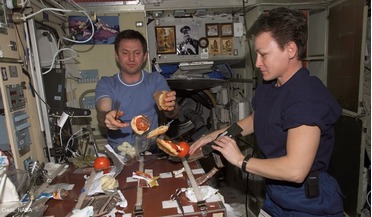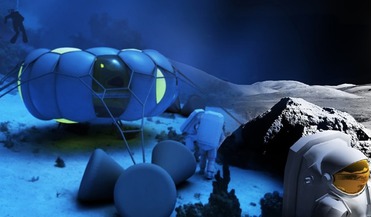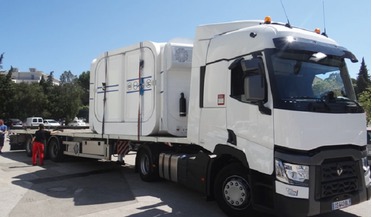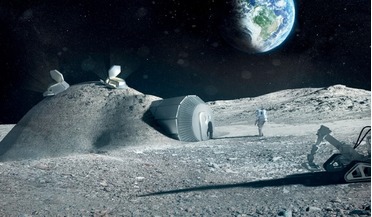 October 2015
Eating in space: from Michelin-starred chefs to self-sufficiency
October 2015
Eating in space: from Michelin-starred chefs to self-sufficiency
... man Over a decade ago, ESA defined the nine basic food plants that should be grown in space greenhouses and supply at least 40% of the astronauts’ diet, whether on the Moon, other planets or in space vehicles. They are...
 October 2015
How to 3D-print a habitat on Mars
October 2015
How to 3D-print a habitat on Mars
... crew living areas and is connected via 3D-printed passageways with the sub-habitats. These house a laboratory, greenhouse, garage airlock and other required working areas. There are a number of reasons to adopt a hybrid approach of purely...
 October 2015
Earth independence: new definitions of home on Mars missions and beyond
October 2015
Earth independence: new definitions of home on Mars missions and beyond
... human landings, that capability must increase at least twenty-fold. A surface outpost on Mars, complete with a hydroponic greenhouse to supply food to the colonists Astronauts will need a surface habitat during their stay on Mars, to be a shelter...
 February 2016
Shifting Space Perspectives: Artistic Research as Connective Research Area
February 2016
Shifting Space Perspectives: Artistic Research as Connective Research Area
.... The structure is comprised of a main habitation unit, airlock module, maintenance workshop, docking port, laboratory and greenhouse. The main habitation unit consists of an inflatable structure covered by the back shell of the entry capsule and...
 February 2016
A Self-Deployable Habitat for Extreme Environments (SHEE)
February 2016
A Self-Deployable Habitat for Extreme Environments (SHEE)
... habitats to be combined. A ‘SHEE village’ could include modules that serve as living bases, with laboratories, greenhouses or medical stations. Advances in technology and configuration incorporated in the SHEE habitat provide significant background...
 April 2017
Surviving radiation for space colonisation
April 2017
Surviving radiation for space colonisation
... ground. The Mars One habitat plan includes using landing capsules as living space and inflating large greenhouses and other structures. The inflatable structures would then be buried under soil to provide radiation protection, a task...